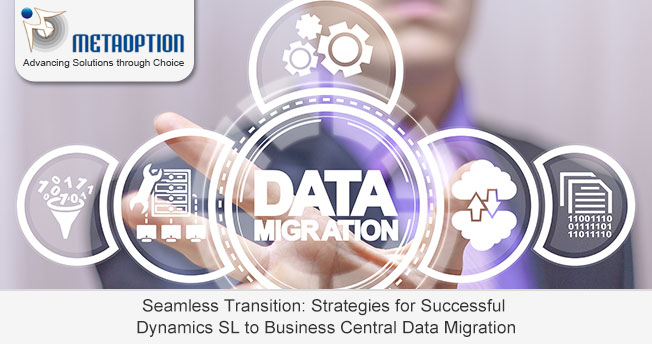Migrating from one enterprise system to another can be a complex endeavor, especially when it comes to data migration. In the case of transitioning from Dynamics SL to Business Central, ensuring a seamless transfer of data is crucial for a successful migration. In this blog post, we will explore key considerations and best practices to help you navigate the data migration process with confidence.

Key Considerations when Migrating from Dynamics SL to Business Central
Migrating data from Dynamics SL to Business Central can present several challenges and considerations. Let’s explore some of the key ones:
Data Mapping and Structure
One of the primary challenges is mapping the data fields and structures from Dynamics SL to align with those of Business Central. Dynamics SL and Business Central have different data models and schemas, which may require custom mapping and transformation efforts. This process involves identifying corresponding fields in Business Central for each data element in Dynamics SL to ensure accurate and meaningful data migration.
Data Quality and Cleansing
Data quality issues are common in legacy systems like Dynamics SL. Before migrating the data, it is essential to cleanse and validate it to ensure accuracy, consistency, and integrity. Data cleansing involves removing duplicates, correcting inconsistencies, standardizing formats, and resolving missing or outdated information. Addressing data quality challenges during the migration process helps prevent potential issues and ensures a clean dataset in Business Central.
Data Volume and Performance
Migrating large volumes of data can impact migration time and system performance. As Dynamics SL databases grow over time, the sheer volume of data can make the migration process time-consuming and resource-intensive. Consider implementing data archiving or purging strategies to reduce the volume of unnecessary or outdated data before migration. Optimizing the migration process and allocating sufficient resources will help mitigate potential performance challenges.
Data Dependencies and Relationships
Data dependencies and relationships within Dynamics SL can pose challenges during migration. For example, if a record in Business Central relies on related records in Dynamics SL, maintaining referential integrity becomes crucial. It requires careful planning and sequencing to ensure that related data is migrated in the correct order to maintain data consistency and relationships.
Customizations and Integrations
Dynamics SL often involves customizations and integrations tailored to specific business needs. Migrating these customizations and integrations to Business Central requires a thorough understanding of the differences in development frameworks (e.g., Dexterity vs. AL) and the availability of equivalent functionality in Business Central. Evaluating the impact of customizations and determining the best approach for migrating or re-implementing them is essential to maintain desired functionality in the new system.
Data Validation and User Acceptance Testing
Validating the migrated data and conducting User Acceptance Testing (UAT) are crucial steps in the migration process. UAT involves testing the migrated data against expected outcomes, ensuring accuracy, completeness, and usability. It is essential to involve key stakeholders and end-users to validate the data and identify any inconsistencies or missing information. The complexity of data relationships and dependencies can make thorough testing a challenge, requiring meticulous planning and coordination.
Data Security and Compliance
Data security and compliance considerations must be addressed throughout the migration process. Sensitive or confidential data should be protected during the migration, and appropriate security measures, such as encryption and access controls, should be implemented. Organizations must also ensure compliance with industry-specific regulations and data protection laws, such as GDPR or HIPAA when handling and migrating sensitive data.
Training and Change Management
Migrating to a new system like Business Central requires adequate training and change management efforts. Users familiar with Dynamics SL need to adapt to the new system, its features, and its user interface. Providing comprehensive training and support during and after the migration process is essential to ensure a smooth transition and user acceptance.
Dynamics SL to Business Central: Winding Up
Migrating from Dynamics SL to Business Central can be a transformative journey for your organization. However, the success of the migration heavily relies on a well-executed data migration process. By following the key considerations outlined in this blog post – assessing and mapping data, data cleansing and validation, data conversion and transformation, integration with legacy systems, data volume, and performance, user acceptance testing, and data security and compliance – you can ensure a smooth and successful data migration, setting the stage for a successful transition to Business Central.
Remember, data migration is not just a technical task but also an opportunity to enhance data quality, streamline processes, and unlock the full Potential of Business Central for your organization’s growth and success.
For more information and a tailored demonstration contact us today at Metaoption.


